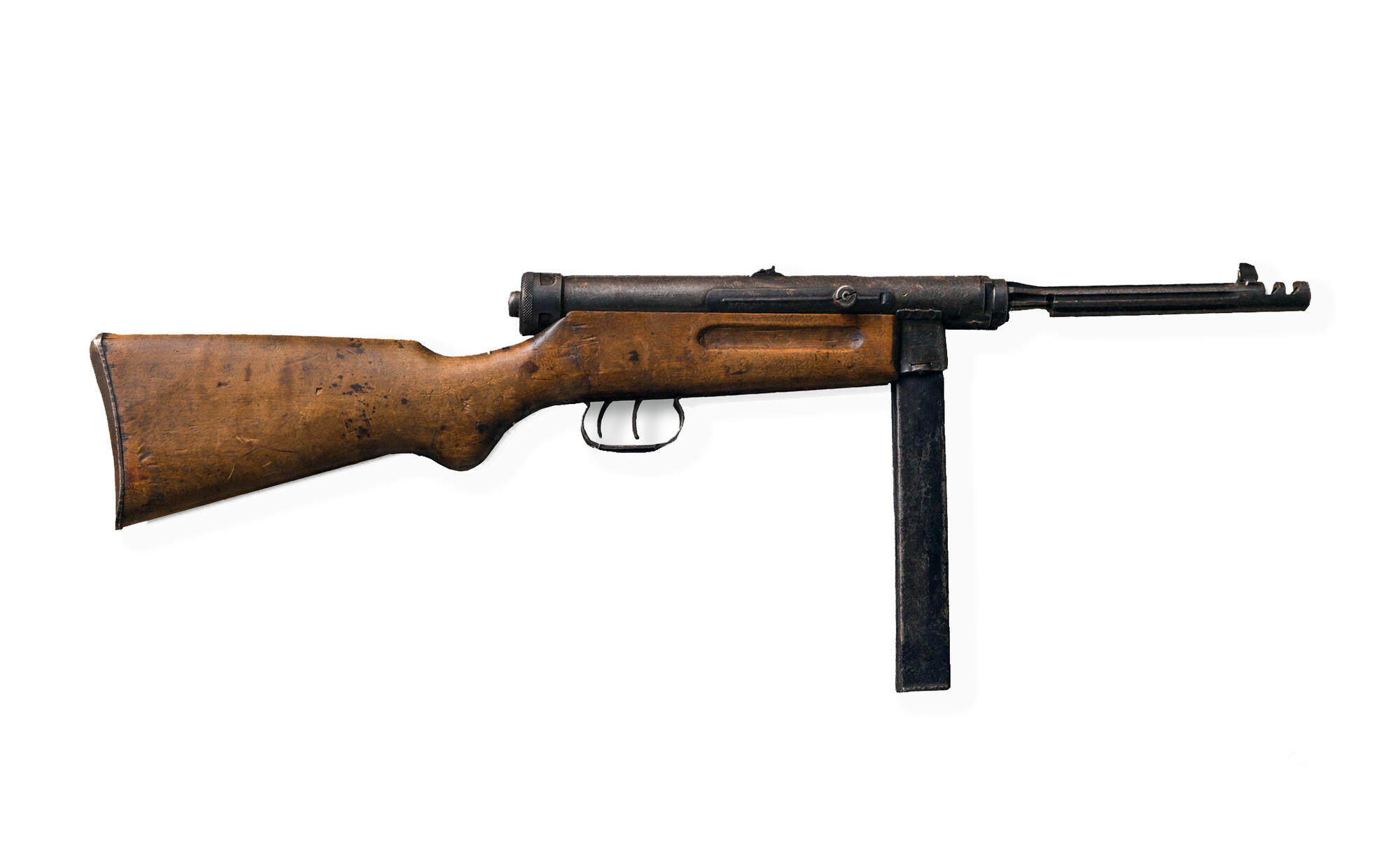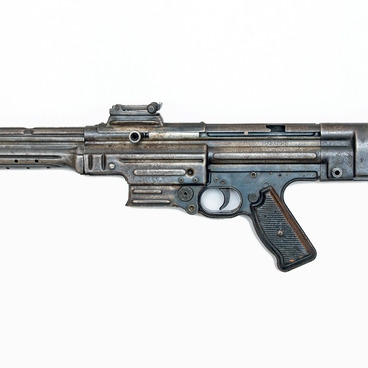The Victory Museum houses the unique MAB 38. This is a legendary submachine gun produced by Beretta in the city of Brescia, northern Italy. Its history began long before World War II.
In 1935, Italy conducted a military operation in Ethiopia. It soon became clear that the Italian army needed more efficient weapons. After a while, the engineer Tullio Marengoni presented an innovative concept of an efficient submachine gun. The military servicemen praised the simple design of the firearm and the wide spray of bullets. It became the world’s first submachine gun.
The production of a limited series of guns was launched in 1938. At first, it was classified as a model for hand assembling. The main components were produced on metal-cutting machines which slowed down the manufacturing. During the war, the design required modifications to speed up production. Because of that, metal stamping was implemented to produce new guns.
The submachine guns were put into service by the Italian Africa Constabulary in 1939. They proved useful for storm troops and were adopted by the Guards, the Carabinieri, and the paratroopers.
In 1941, engineers designed a magazine-carrying vest for special troops. Its pockets could also be used to carry hand grenades. The vest was known as “Samurai” due to the similarity of the magazine pockets to the armor of Japanese warriors.
Although the submachine gun was still mass produced, the speed of manufacturing decreased. Engineers strove to maintain the high quality of this model. Fewer orders were placed for this submachine gun than for other weapons. The supplies did not increase because soon Italy announced its surrender. Later, the submachine gun was unaffordable for many servicemen and was considered an exclusive weapon of elite troops.
Still, the MAB 38 became part of popular culture. It was often depicted on various posters. After Italy had surrendered, a lot of submachine guns came into the hands of the troops of Benito Mussolini. Hitler’s army occupied the northern regions of Italy and took charge of manufacturing these submachine guns.
Further attempts to simplify the model and make it cheaper were made under German control. The new submachine guns received German acceptance marks. The guns were used by the German, Romanian, Argentine, and other armies.
In 1935, Italy conducted a military operation in Ethiopia. It soon became clear that the Italian army needed more efficient weapons. After a while, the engineer Tullio Marengoni presented an innovative concept of an efficient submachine gun. The military servicemen praised the simple design of the firearm and the wide spray of bullets. It became the world’s first submachine gun.
The production of a limited series of guns was launched in 1938. At first, it was classified as a model for hand assembling. The main components were produced on metal-cutting machines which slowed down the manufacturing. During the war, the design required modifications to speed up production. Because of that, metal stamping was implemented to produce new guns.
The submachine guns were put into service by the Italian Africa Constabulary in 1939. They proved useful for storm troops and were adopted by the Guards, the Carabinieri, and the paratroopers.
In 1941, engineers designed a magazine-carrying vest for special troops. Its pockets could also be used to carry hand grenades. The vest was known as “Samurai” due to the similarity of the magazine pockets to the armor of Japanese warriors.
Although the submachine gun was still mass produced, the speed of manufacturing decreased. Engineers strove to maintain the high quality of this model. Fewer orders were placed for this submachine gun than for other weapons. The supplies did not increase because soon Italy announced its surrender. Later, the submachine gun was unaffordable for many servicemen and was considered an exclusive weapon of elite troops.
Still, the MAB 38 became part of popular culture. It was often depicted on various posters. After Italy had surrendered, a lot of submachine guns came into the hands of the troops of Benito Mussolini. Hitler’s army occupied the northern regions of Italy and took charge of manufacturing these submachine guns.
Further attempts to simplify the model and make it cheaper were made under German control. The new submachine guns received German acceptance marks. The guns were used by the German, Romanian, Argentine, and other armies.




